Note: iPhones, iPads, Firefox & some other Search Engines may not be suitable
Use Google Chrome for this Web Page to load perfectly!
Click the logo above to reach the ssMaritime FrontPage for News Updates & “Ship of the Month”
With
Please Note: All ssmaritime as well as my other related maritime & cruise sites are 100% non-commercial and privately owned sites. Be assured that I am NOT associated with any shipping or cruise companies or agencies or any other organisations! The author has been in the passenger shipping industry since May 1960, but although retired and unwell, I occasionally attempt to write an article now and then, in order to bring enjoyment and pleasure to ship enthusiasts past passengers and crew.
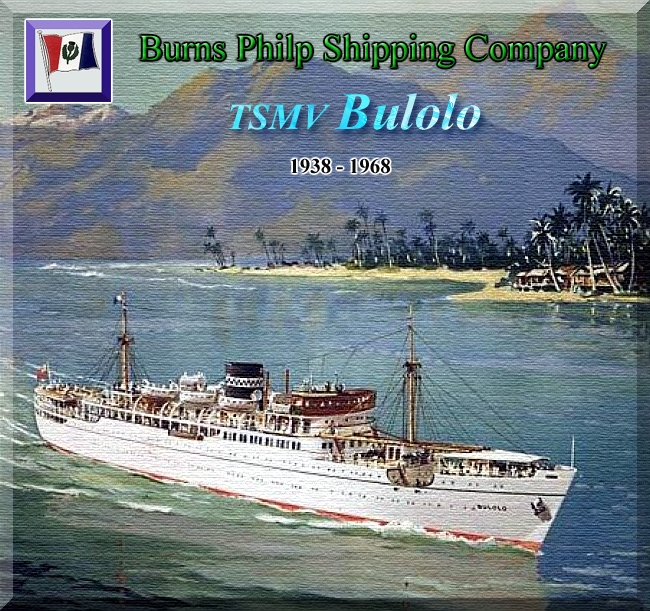
A
fine artist impression from a Burns, Philp Travel Poster
Page Two
Photographs
from the author’s private collection, or as marked including the …
NEW: The R.A.N. Engineer Jock Haug Story.
After the brand new T.S.M.V. Bulolo (as seen above) had operated just eight return voyages prior the commencement of World War 2 she was taken over on September 22, 1939 by the British Ministry of War Transport on behalf of the Royal Navy.
Armed Merchant Cruiser:
Then on October 21 she was she was given a
comprehensive conversion at
She was equipped with seven 6 inch as well as two 3 inch anti aircraft guns. There were also depth charges on board and a good variety of various smaller armaments and weapons. It had been worked out that if the Bulolo would cruise at 12 knots she had an excellent range of around 9,300 miles, however, when speed was of importance, she could sail at 15 knots, then her range would be around 7,700 miles.
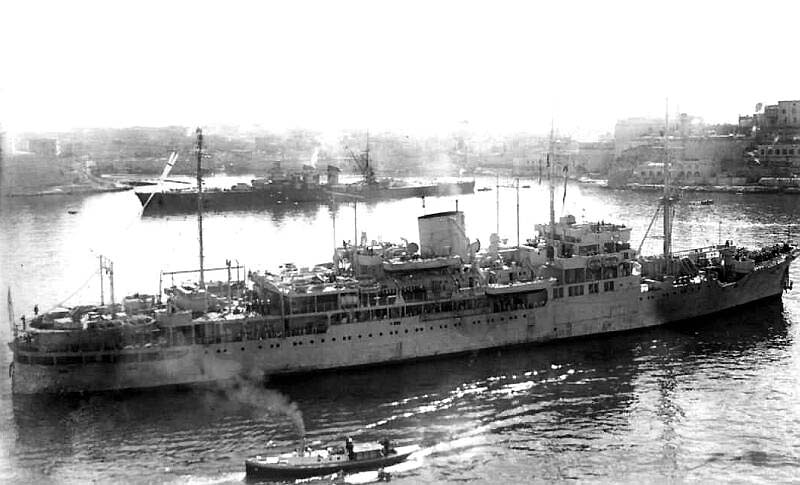
Armed Merchant Cruiser H.M.S. Bulolo (F82) is seen here in 1941
Photograph © NA
The Bulolo departed on January 24, 1940 as part of the “Freetown
Convoy” on an escort duty between
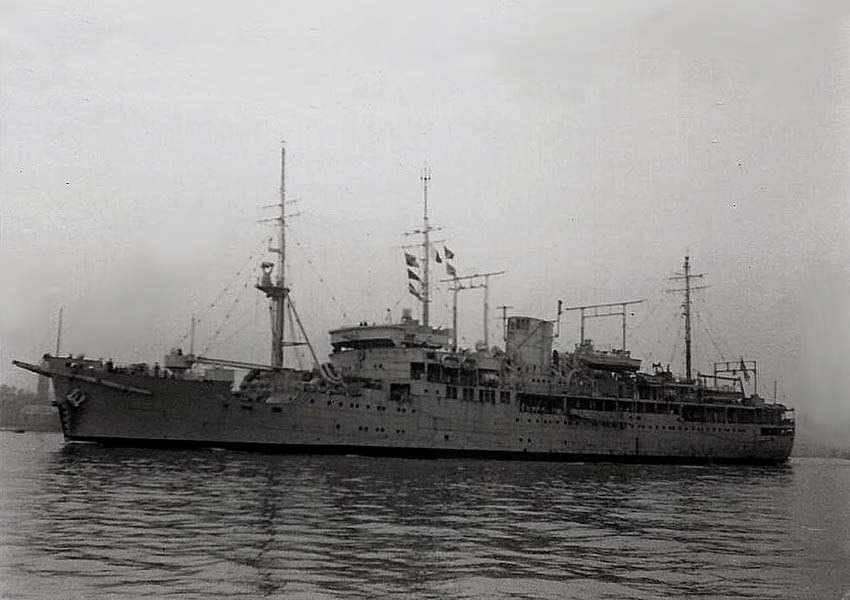
Armed
Merchant Cruiser
Photograph © NA
Landing Ship and
Headquarters:
As Admiral (
On March 25, 1942 the Bulolo was sold to the Admiralty who had her converted into the very first ever “Landing Ship and Headquarters” (L.S.H.). Thus the Bulolo was stripped of all non essential equipment and she was fitted with a most extensive and sophisticated communications systems ever to be placed into a ship. Thus, she had full control systems for the three forces, ‘Army’, ‘Navy’ and the ‘Air Force’. For the time, she had the finest brand new available high tech communications equipment and control room facilities.
For instance, there were complete sets of
wireless instruments in order that contact could be maintained with landing
forces, the Bulolo became the perfect ship with equipment in order to enable
the “Operational Planners” to stay in touch with

Overall communications layout and
Images © NA
In
After her sea trials she would be fully manned who would be fully trained with all her new equipment and other facilities in order to be ready to commence her new role.
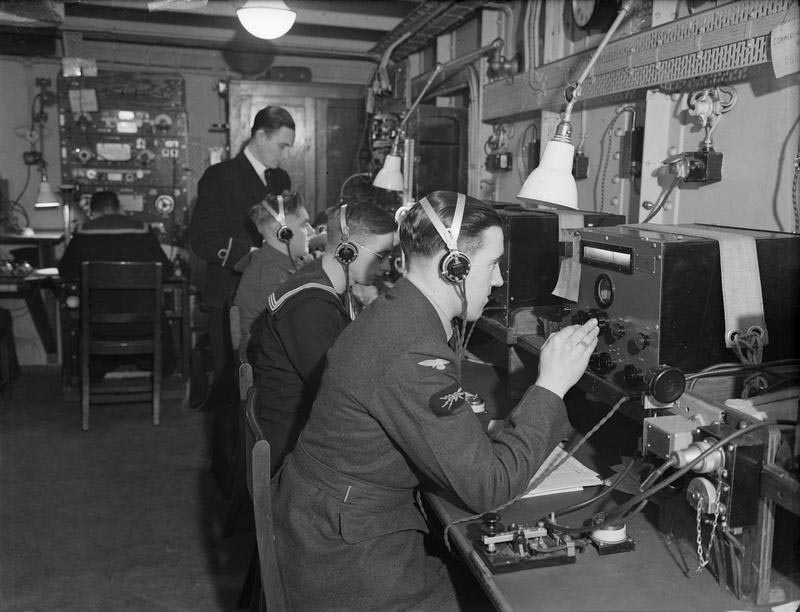
The busy Radio Room on the Landing Ship H.M.S. Bulolo
Photograph © IWM (A 13842)
Operation Torch:
The Bulolo’s first operation as the Mountbatten HQ flagship, was given to Admiral Sir Harold Martin Burrough as she would be used as the Head Quarter Ship for invasion of North Africa, which was codenamed “Operation Torch”.
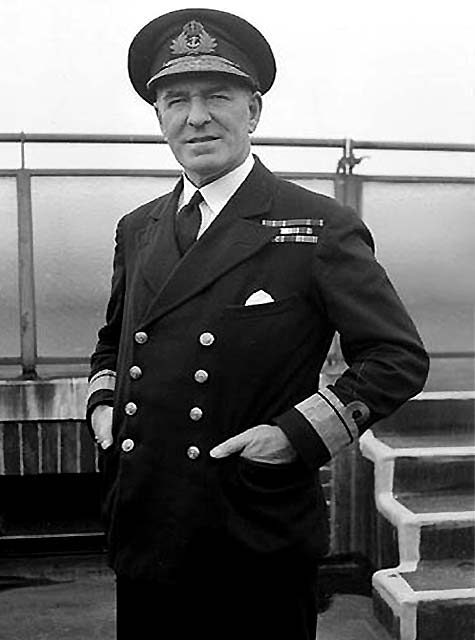
This convoy comprised some 300 ships which
departed from ports all around the
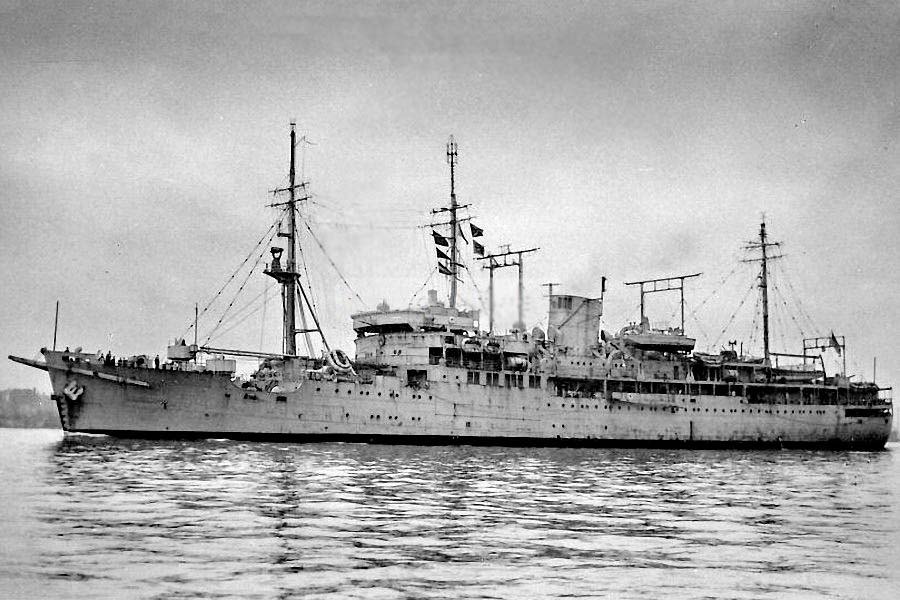
Source
unknown - Please see photo notes at bottom of page in order that credit may be
given
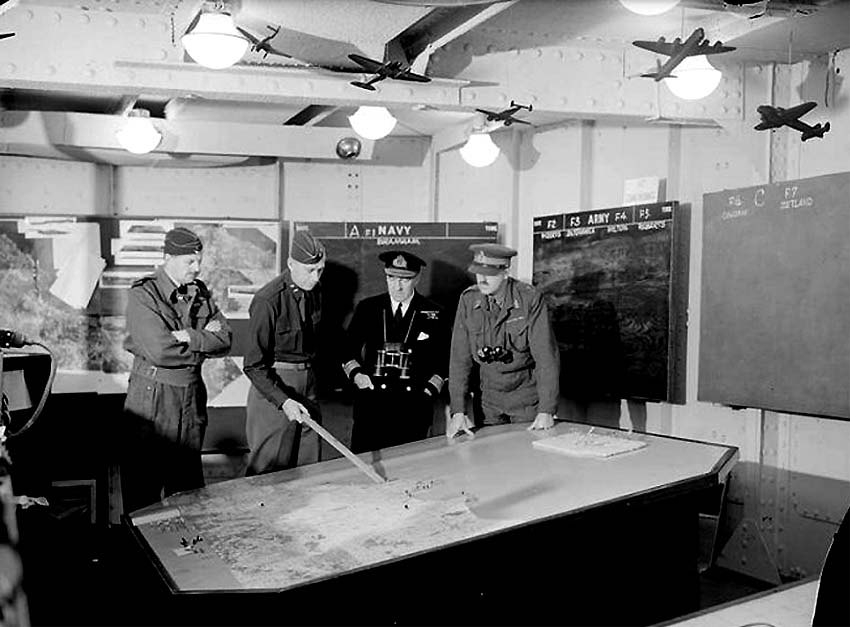
Photograph © IWM
Photograph above: We see from left to right Air Commodore Lawson, Major General
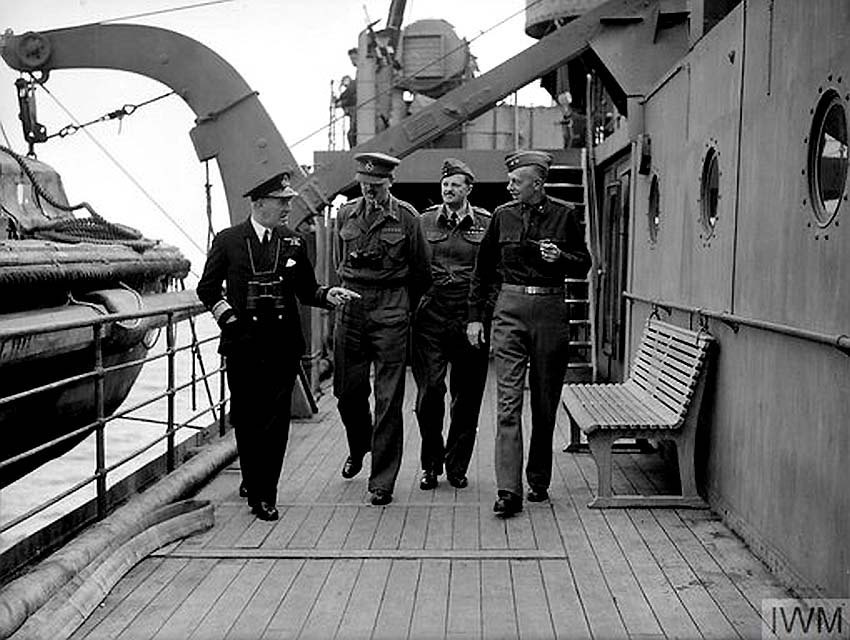
Photograph © IWM
Photograph above: From left to right we see Rear Admiral Sir
The voyage was a perfect and a smooth one,
however having passed by the German’s through the Straits of
“ … while approaching the harbour that morning, Bulolo had been heavily
dive-bombed by Hun aircraft. A near miss had rendered the telegraph indicators,
linking the bridge to the engine room, out of action. As there had been no
occasion to use the telegraph between then and coming into harbour, there was
no reason to suspect they had been damaged. Now, as the captain rang down
‘Stop - Half astern - Full astern’ the engineers below were
blissfully unaware that they had been given any orders. Luckily a sandbank and
some rafts broke the impact, but Bulolo hit the concrete jetty a tremendous
crack before finally coming to rest.”
The Bulolo remained in
Casablanca
But their Christmas break for the crew would
be a short one, for early in January 1943 she was to have a special appointment
in
It was quite clear that
“To
help build his case,
British out-planning of the Americans was due
in no small part to a Royal Navy vessel, H.M.S. Bulolo, a floating library and
communications centre, with a large staff (much larger than the Americans had
thought to bring with them). The British monopoly on communication allowed
It certainly did prove that these red folders
and Bulolo’s highly intellectual contribution to history in
Other Operations:
After the very successful “Operation Casablanca” she became the flagship of Rear Admiral Thomas Troubridge in charge of “Force A” transporting the British XIII Corps onto the Sicilian landings in the Gulf of Noto in July 1943.
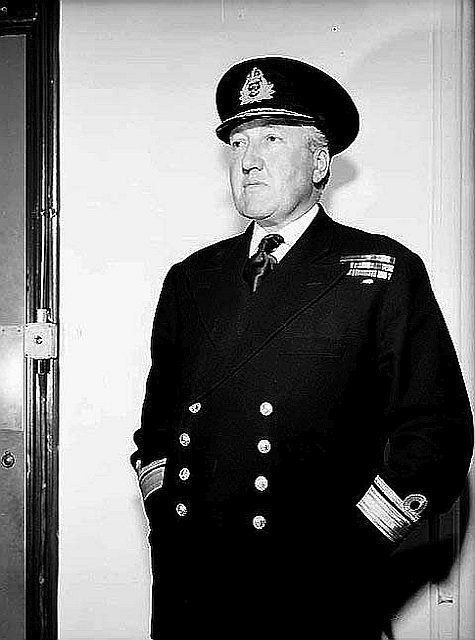
Then in January 1944 again under the
Operation Overlord:
Commodore Douglas-Pennant, Naval Commander of
Force ‘G’, hoisted his (
Operations “Overlord” and “
However, for it to be successful and to ensure sufficient resources to resist any German counter-offensive, “Neptune” required to deploy almost 7,000 ships, in order to land some 150,000 men as well as all their equipment on various beaches in northern Normandy. Thus exercises were planed.
Exercise Fabius:
These exercises were known as “Exercise
Fabius: which were held from 2 to 4 May 1944, as well as the subsequent D-Day
operations which would be controlled and directed from Admiral Mountbatten’s
Headquarter ship, the H.M.S. Bulolo. This modern and superbly suited ship had
already had an earlier successful career, such as the successful assaults at
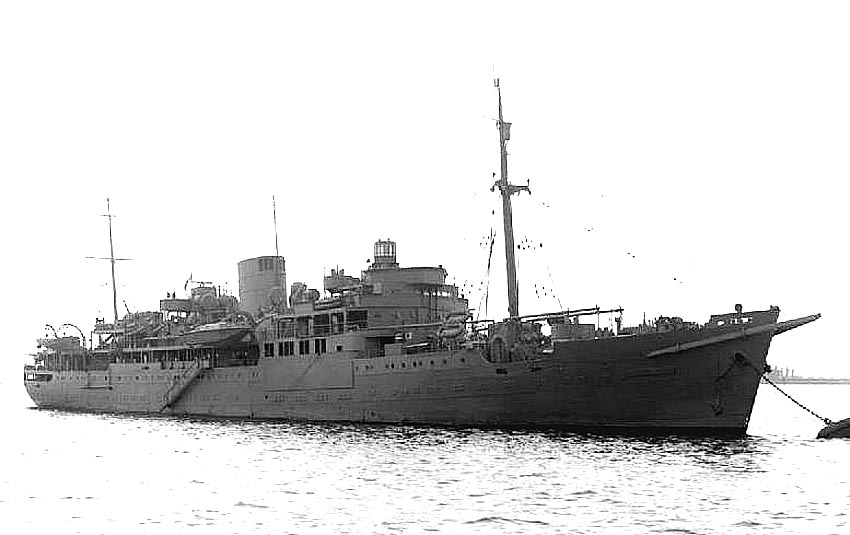
Photograph © IWM
Two weeks after Fabius and before D-Day, on
May 24, 1944, King
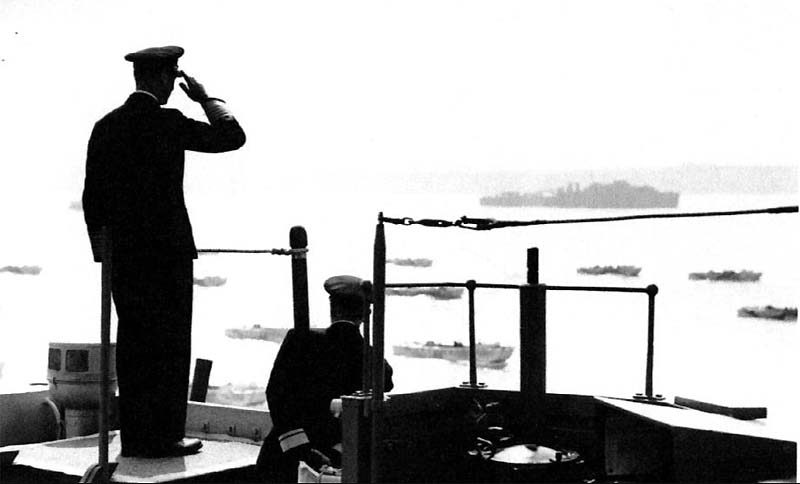
The King also inspected the ships facilities,
which was obviously very impressive, he then walked the deck and he inspected
the crew and WRNS who were deployed aboard the “Landing Ship & Headquarters”
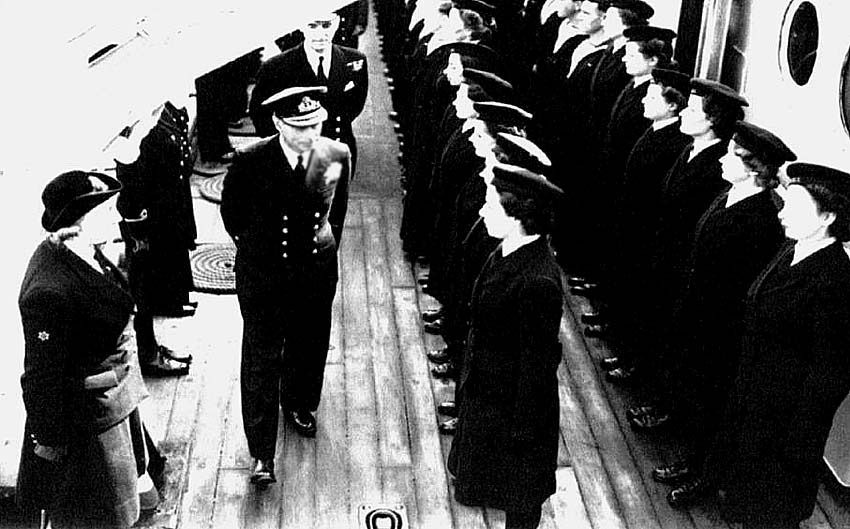
Photograph
© IWM
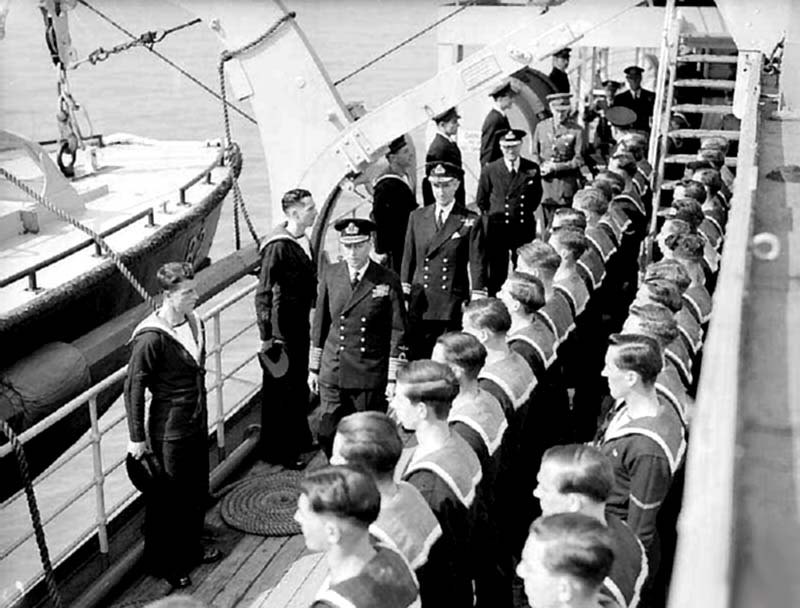
Photograph © IWM
On June 5, 1944, with Admiral
D-Day - Normandy
H.M.S. Bulolo, with Admiral Douglas-Pennant in command, departed Southampton at 1710 and the Solent at 1837 on June 5, arriving at Gold Beach at 0556 on D-Day June 6, as part of “Assault convoy G9A” with all the other ships following her, and suddenly the Germans opened up with their big guns and as one crew member stated “I simply cannot describe the stuff that was flying around us and the noise was unbelievable.” She played her role well as the main central Headquarter Ship in the operation.
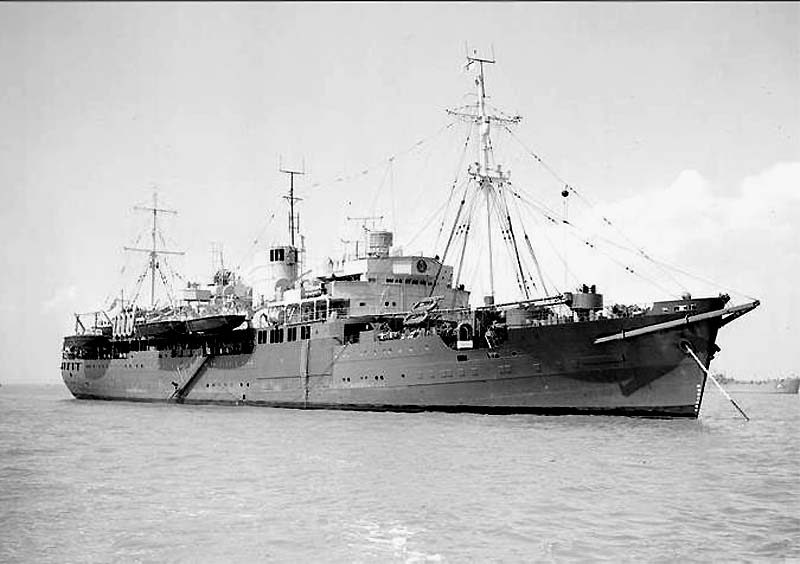
Photograph © IWM
She sustained some bomb damage just forward of her superstructure, near her Operations Room at 0605 on June 7, thankfully there was only minor damage, although there were a number of injuries and sadly one tragic death. Then on June 15 there was some superficial damage to her upper structure when she was rammed by the “Empire Pitt,” and at 1010 on June 27, she was hit by an LCT, which is a “Landing Craft” transporting “Tanks”.
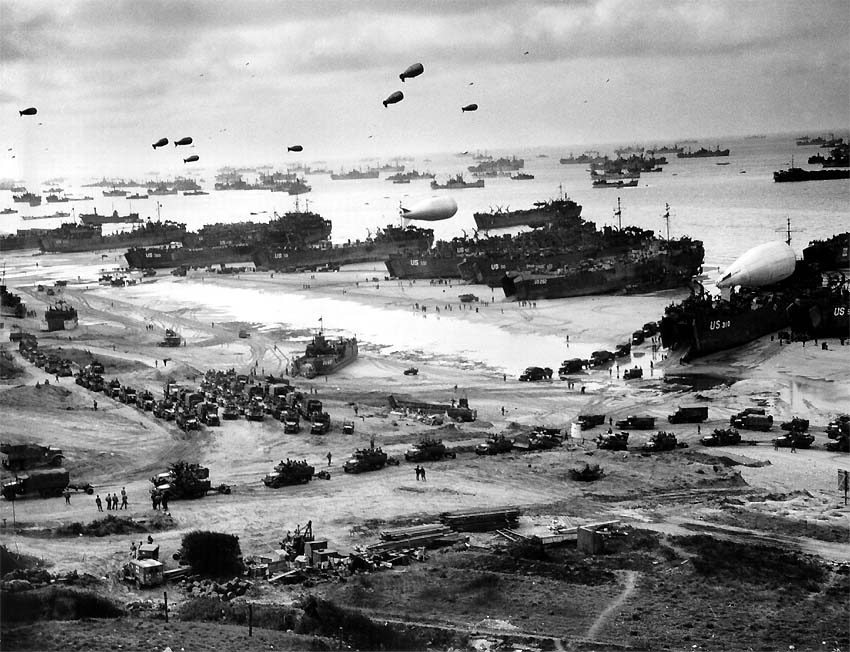
Photograph © US NA
Above and below: Countless British and American “Tank
Landing Crafts” (LCT’s) and other landing
crafts on D-Day
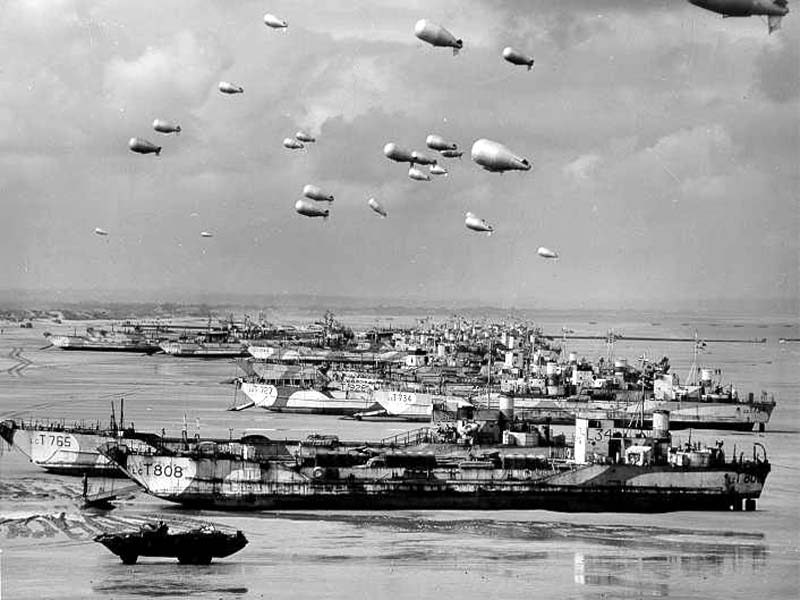
Photograph © US NA
The Bulolo returned to
H.M.S. Bulolo
In September 1945, the
The Bulolo also assisted in evacuating Rabaul in
“I was on board the HMS Bulolo when she was the
headquarters’ ship (LHS) that was involved in the landings near Penang,
Malaya, or
The Bulolo also assisted in evacuating Rabaul in
Next the Bulolo was in
She then headed for the Dutch East Indies, today’s
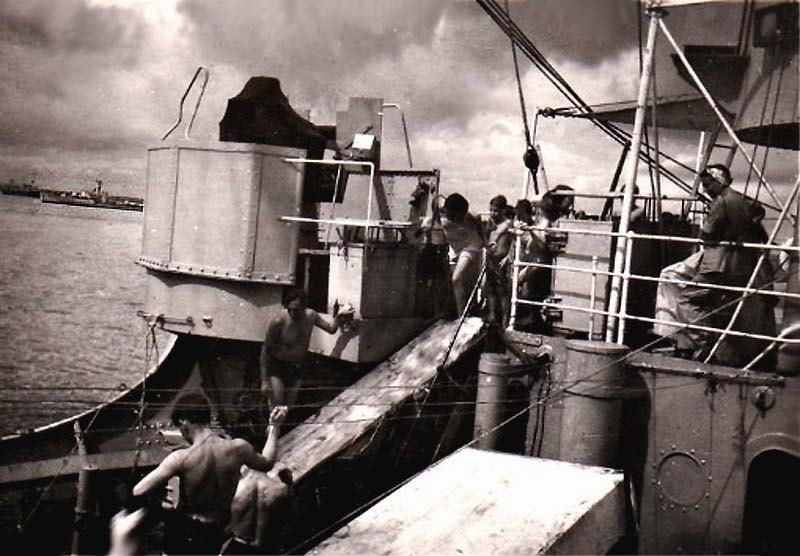
Dutch
children entertained by the crew
H.M.S. Bulolo
Medway: May 24,
1944, HRH King
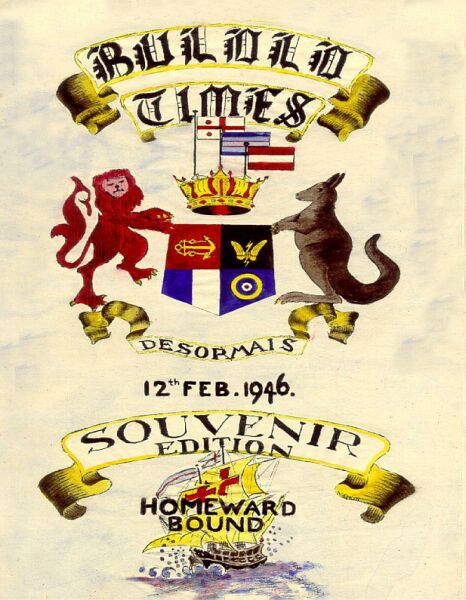
“Bulolo Times” - Homeward Bound
edition
Provided by
The Jock Haug Story
Royal Australian Navy mechanical engineer Jock
Haug served aboard the H.M.S. Bulolo from 1941 through to 1945, and he saw a
great deal of the ships aforementioned duties. However his story, as was
related to me by his son
Please
Note: all images below were provided by
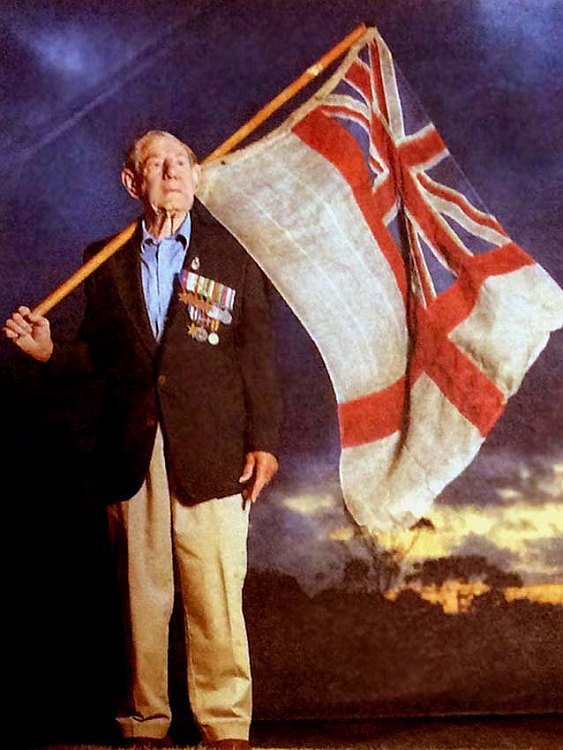
Jock Haug 2004 Photograph by
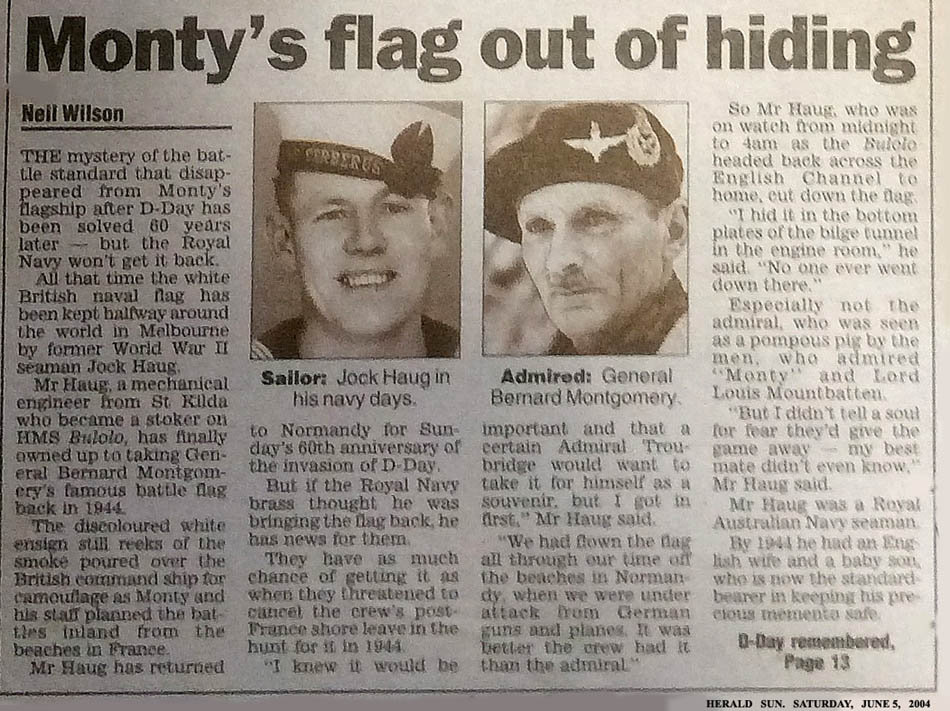
Herald
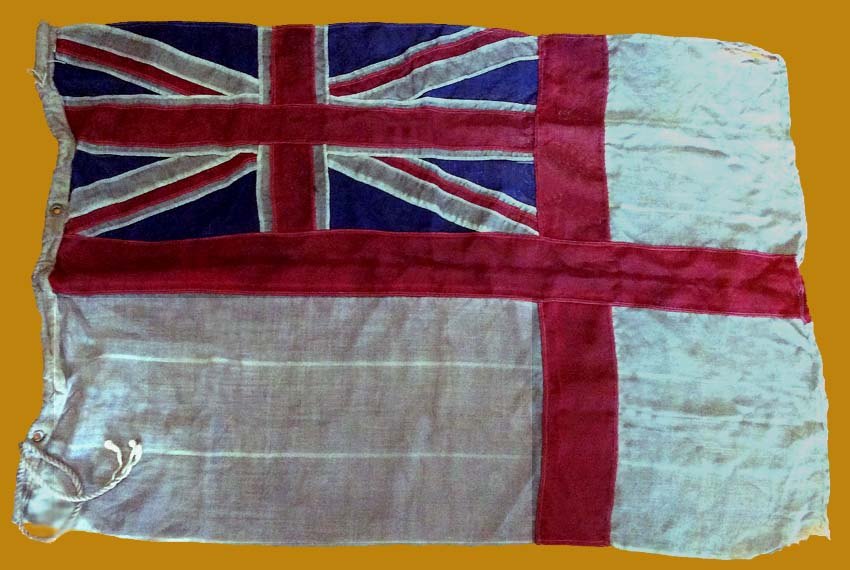
And here is the very famous flag in question
The photograph of Jock Haug in the Newspaper
story, you will note the name “Cerberus” on Jock’s cap. This
is the name of “H.M.A.S. Cerberus” being the Royal
Australian Naval base that serves as the primary training
establishment for R.A.N. personnel. The base is located adjacent
to “Crib Point” on the “
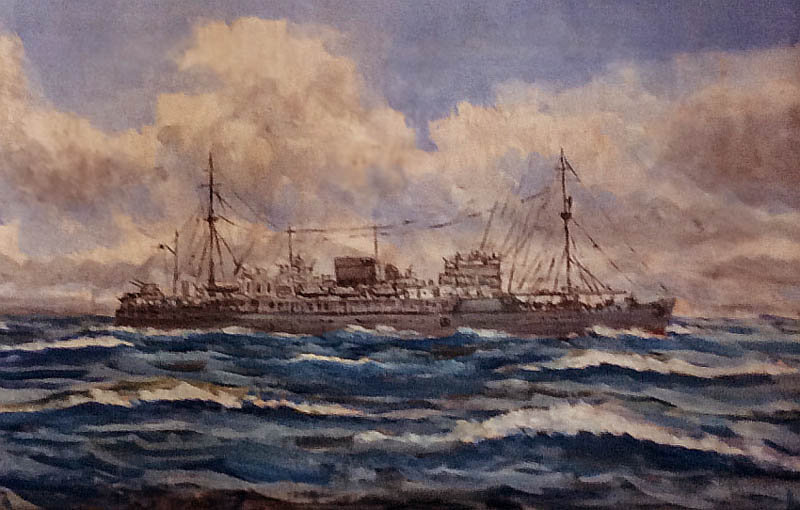
This
is a painting acquired by Jock Haug of the
T.S.M.V. Bulolo
Her Naval service officially terminated on
December 5, 1946, and having been handed back to Burns, Philp she was given a
comprehensive refit and the once again delightfully gleaming white
Also read about the 1911 Burns Philp Ship - S.S. Montoro
***********************************
“Blue
Water Liners sailing to the distant shores.
I watched them come, I watched them go and I watched them
die.”
Return to the ssMaritime MAIN INDEX
ssMaritime.com & ssMaritime.net
Where you will discover over 1,300
Classic Liners & the 1914 built MV Doulos Story
The Author has been in Passenger Shipping &
the Cruise Industry for some 60 years!
“Save The Classic
Liners Campaign”
Founded in the
early 1990’s - The author is the founder and president
Please
Note: ssmaritime and
associated sites are 100% non-commercial and the author seeks no funding or favours of any shape or form, never have
and never will!
Photographs
on ssmaritime and associate pages are by; the author or from
the author’s private collection. In addition there are some images that
have been provided by Shipping Companies and private photographers or
collectors. Credit is given to all contributors. However, there are some
photographs provided to me without details regarding the photographer/owner
concerned. I hereby invite if owners of these images would be so kind to make
them-selves known to me (my email address may be found on www.ssmaritime.com only), in order that due credit may be given.
This
notice covers all pages; although, and I have done my best to ensure that all
photographs are duly credited and that this notice is displaced on each page,
that is, when a page is updated!
ssMaritime is owned & © Copyright by
